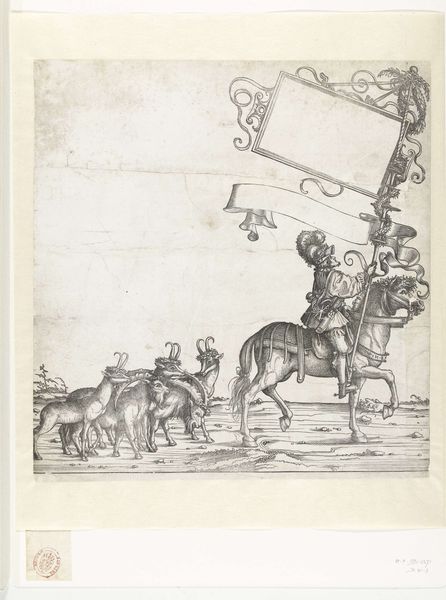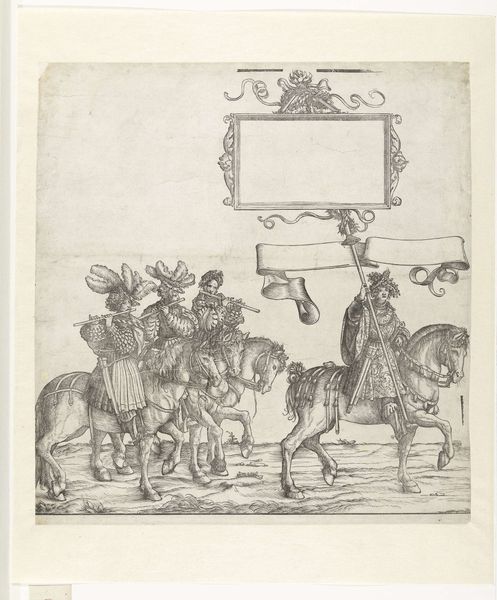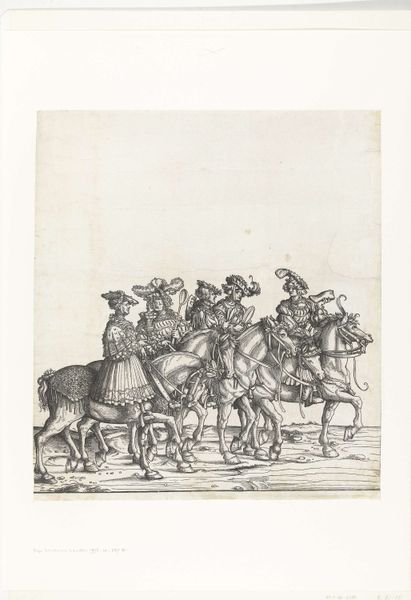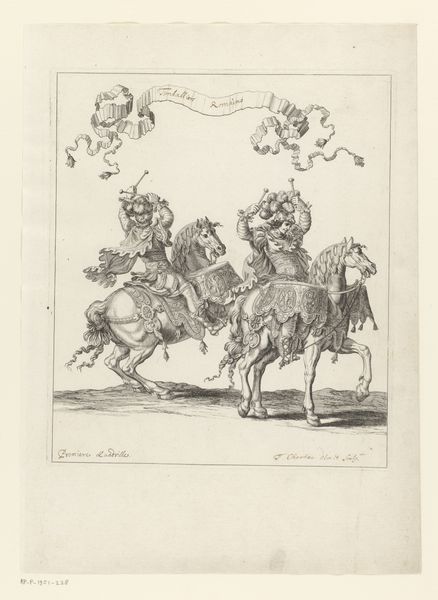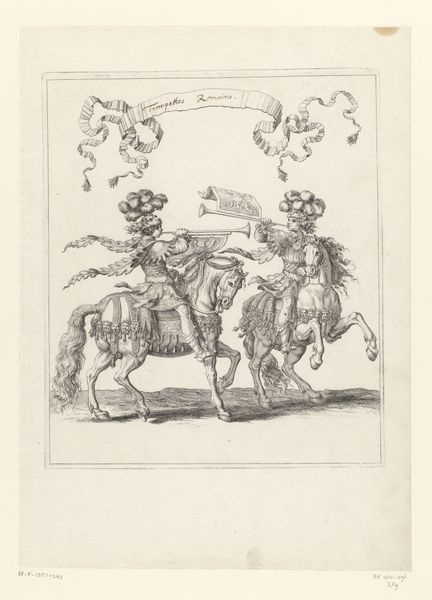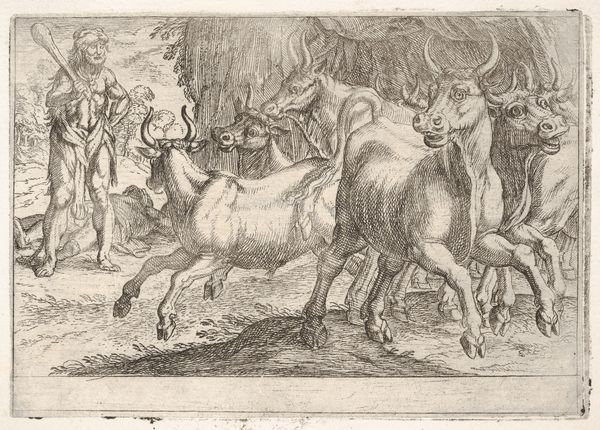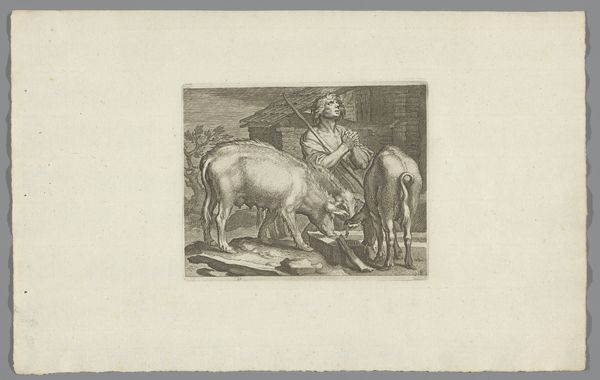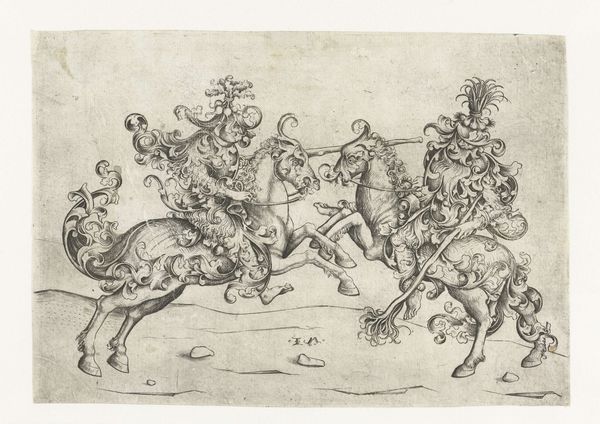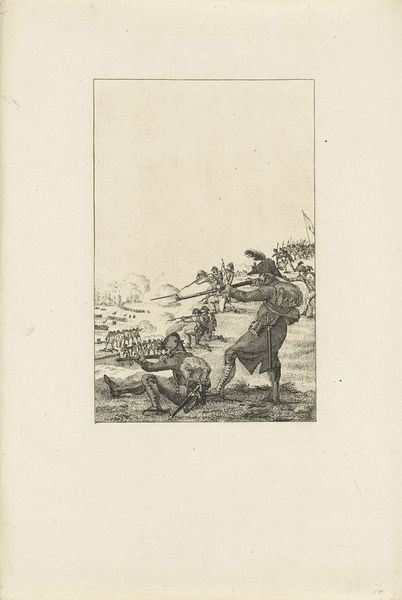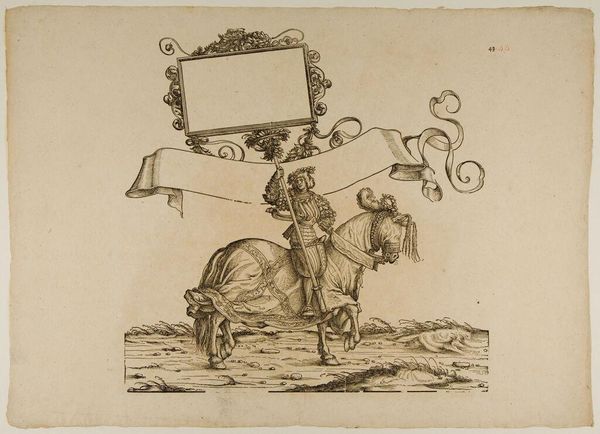
Dimensions: height 397 mm, width 375 mm
Copyright: Rijks Museum: Open Domain
Curator: Look at this print, made with ink on paper. It's entitled "Five Deer and Standard Bearer on Horseback," a work attributed to Hans Burgkmair and thought to originate from around 1483 to 1526. Editor: Wow, talk about detailed! It's stark, almost unsettling. The procession feels both elegant and eerie, like something from a fever dream. Is it German Expressionism? I feel like it might be a dark fairytale. Curator: Indeed. Though created during the Renaissance, its graphic intensity anticipates later expressionistic movements. It evokes an atmosphere charged with unspoken narratives. Consider how deer imagery functions across cultures, from emblems of the hunt to symbols of royal forests and aristocratic power. The detail on the antlers hints towards that tradition. Editor: The deers' antlers are amazing! Each strand is crafted with such patience, one can imagine those natural crowns almost like relics. The horse, though, feels stiff. More ornamental than alive. It's as if it and the rider are just another component to that striking deers, like an ornament atop of them, but in this case a person. Curator: Precisely! The standard bearer could be interpreted as a figure of authority or heraldry, literally holding a blank standard—symbolically potent in that vacancy, prompting inquiry into its significance. The vacant banner may act like a placeholder or canvas that allows viewers to engage critically, or it just simply marks territory. What do you make of the blank herald, in psychological terms? Editor: It looks like a dream I once had about being told what to do but nobody bothered to tell me *what* it was what I was supposed to be doing! Seriously though, the blankness allows viewers to fill it, and the deers behind him just follow along in that eerie sort of fairytale procession. Curator: These vacant banners, heraldry, symbols… it almost feels like a Jungian projection screen where individual fantasies interact with cultural memory, all framed within meticulous ink strokes from five centuries ago. It gives art meaning, or better yet, meanings. Editor: Well, that really gives the old imagination some exercise, doesn't it? Curator: Indeed, some fruitful exercise, in my humble opinion.
Comments
No comments
Be the first to comment and join the conversation on the ultimate creative platform.

